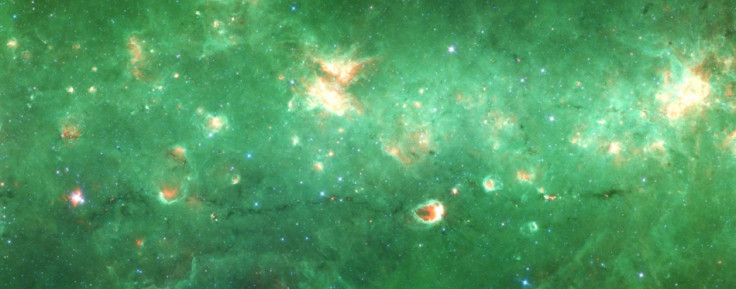Milky Way: First ‘Bone’ of Galactic Skeleton Identified as 'Nessie'

Astronomers in the US have found the first "bone" in the Milky Way's galactic skeleton.
The Milky Way is known as a spiral galaxy because it is a pinwheel-shaped collection of stars, gas and dust.
It has a central bar and two spiral arms wrapped around it but as astronomers view it from the inside its structure is hard to map accurately.
Other spiral galaxies have internal "bones" and observations show long skinny featuresbetween their spiral arms. The bones are relatively straight and computer simulations of galaxy formations show filament webs within spiral disks.
The bone found in the Milky Way is a long tendril of dust and gas. It is over 300 light years long and one to two light years wide, and scientists say it looks like a "cosmic snake".
Alyssa Goodman, from the Harvard-Smithsonian Center for Astrophysics, said: "This is the first time we've seen such a delicate piece of the galactic skeleton."
The structure was discovered in data from the Spitzer Space Telescope in 2010. Researchers initially thought it was a dust cloud and it was named Nessie after the Loch Ness Monster.
However, Goodman realised the cloud was as much as eight times as long as had been estimated and it has now been identified as a galactic bone. The structure has now been named the Nessie bone.
"This bone is much more like a fibula - the long skinny bone in your leg - than it is like the tibia, or big thick leg bone," Goodman said.
"It's possible that the 'Nessie' bone lies within a spiral arm, or that it is part of a web connecting bolder spiral features. Our hope is that we and other astronomers will find more of these features, and use them to map the skeleton of the Milky Way in 3-D."
© Copyright IBTimes 2025. All rights reserved.






















